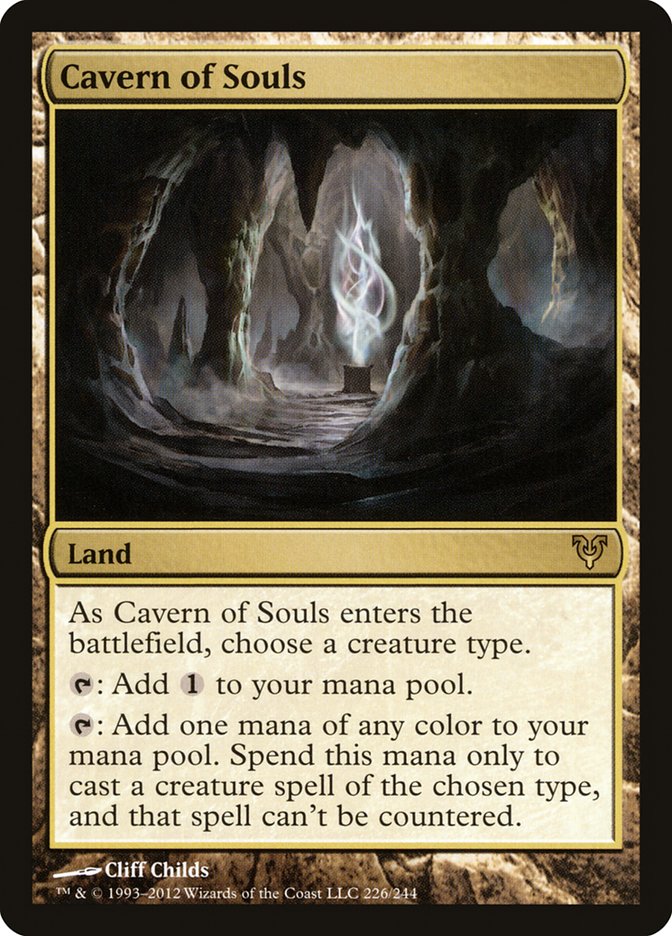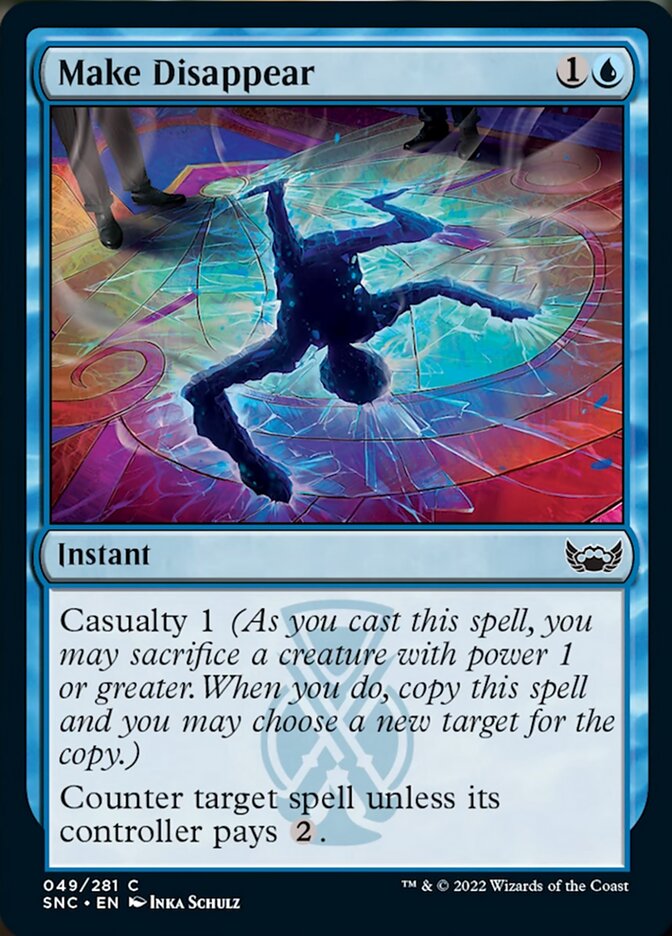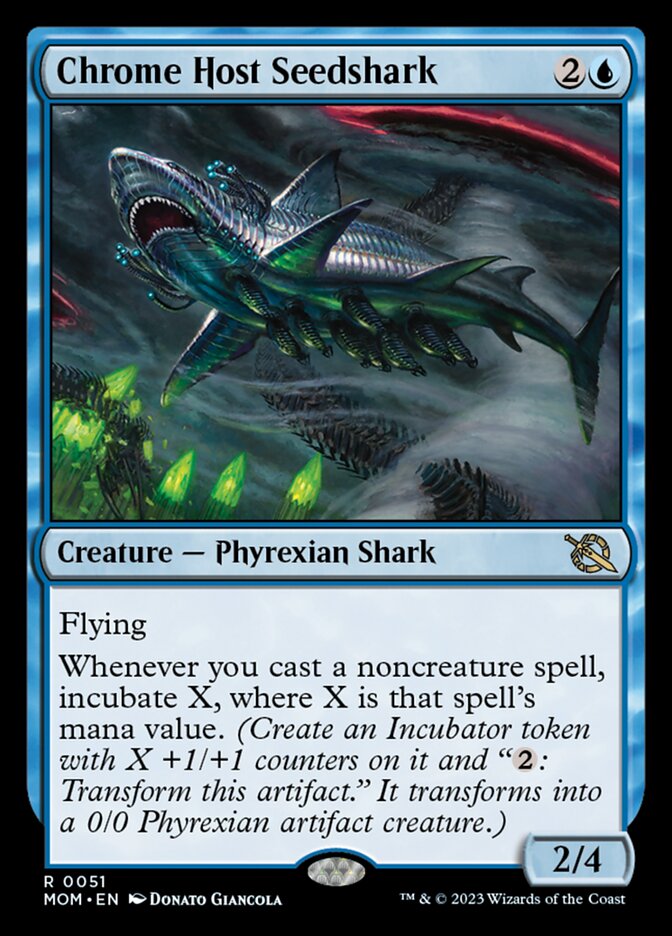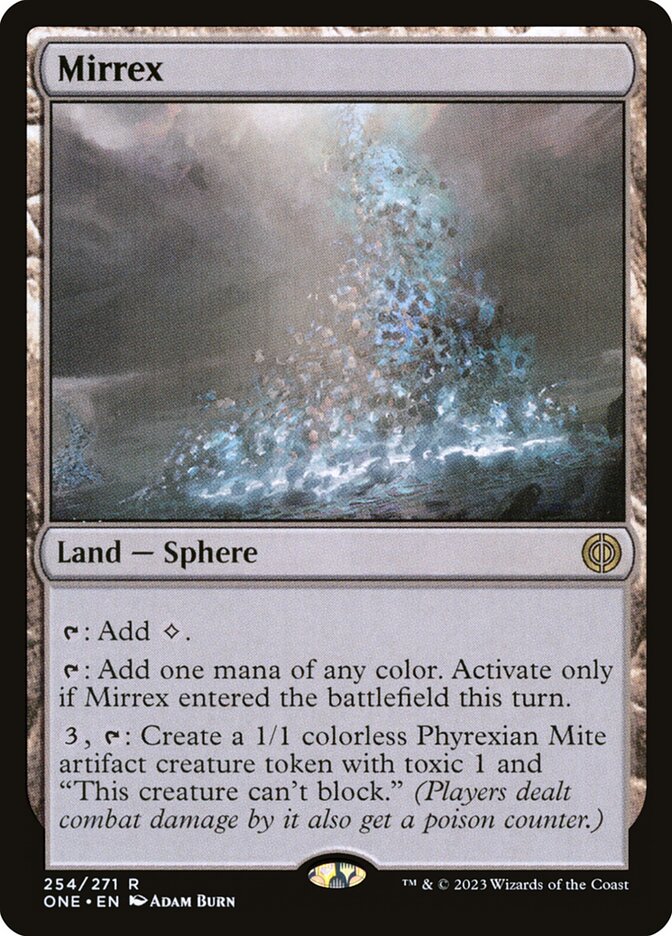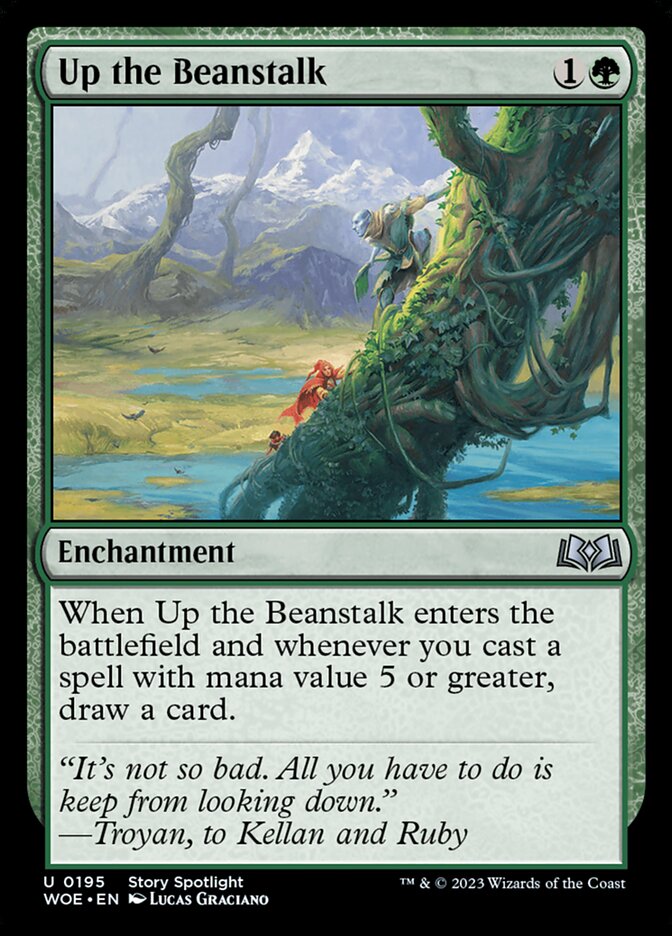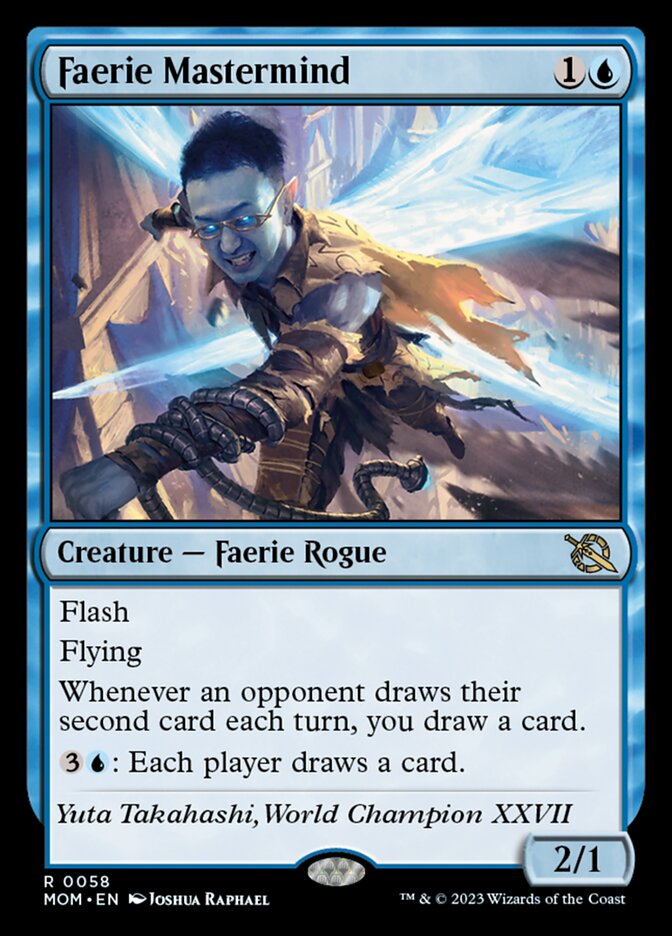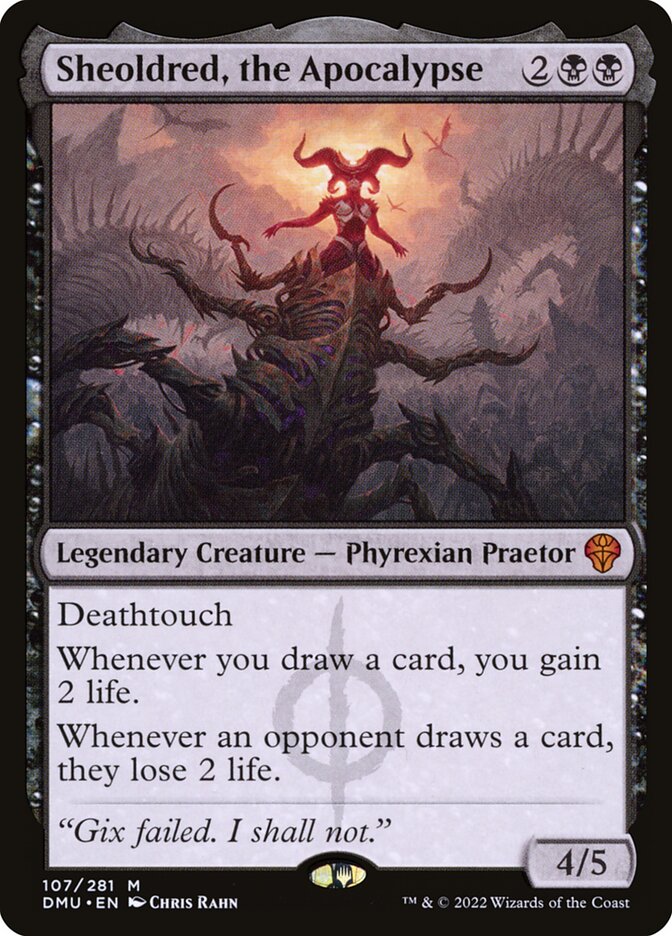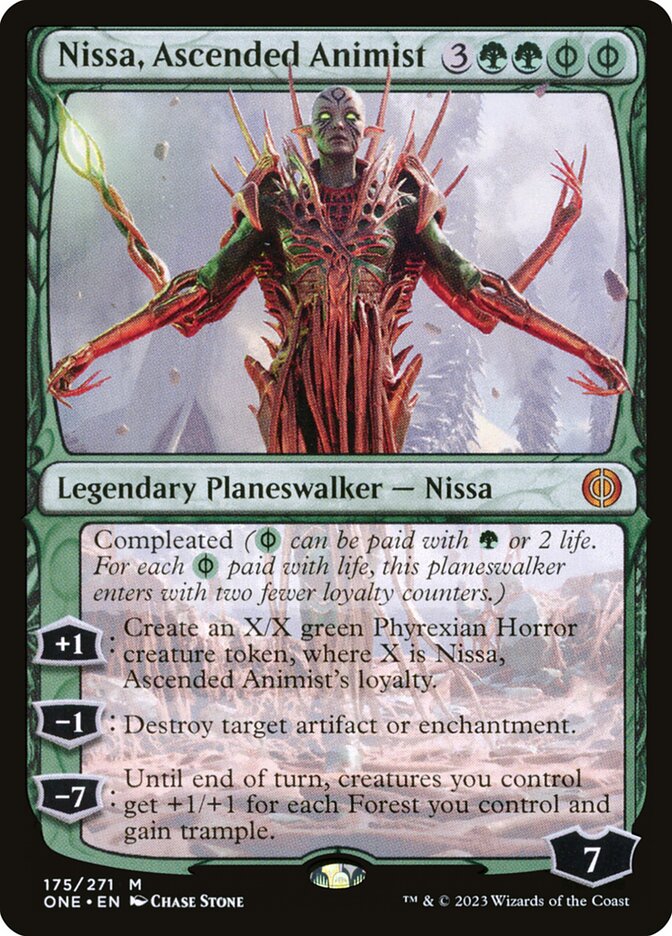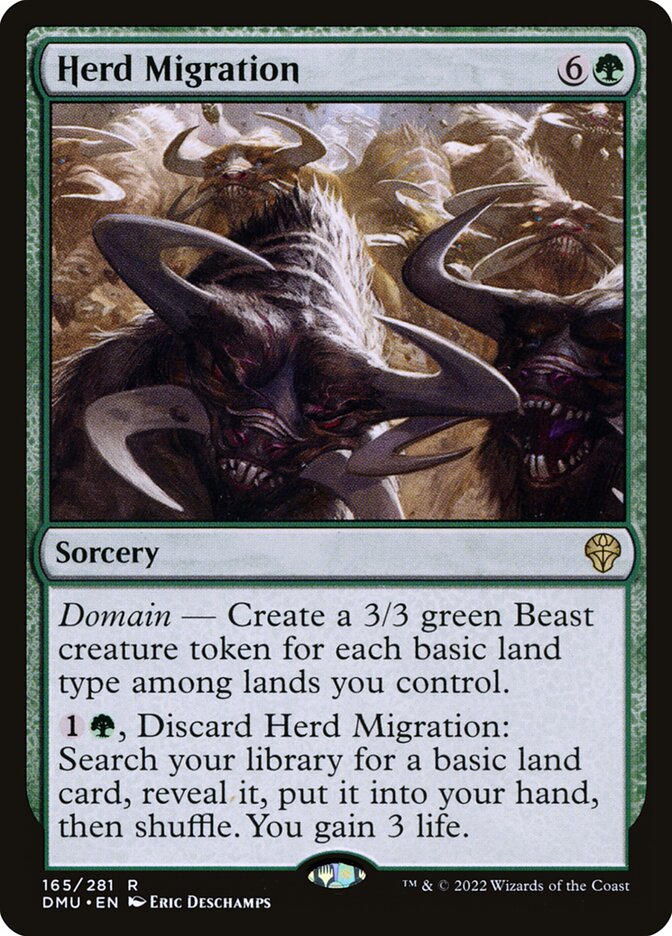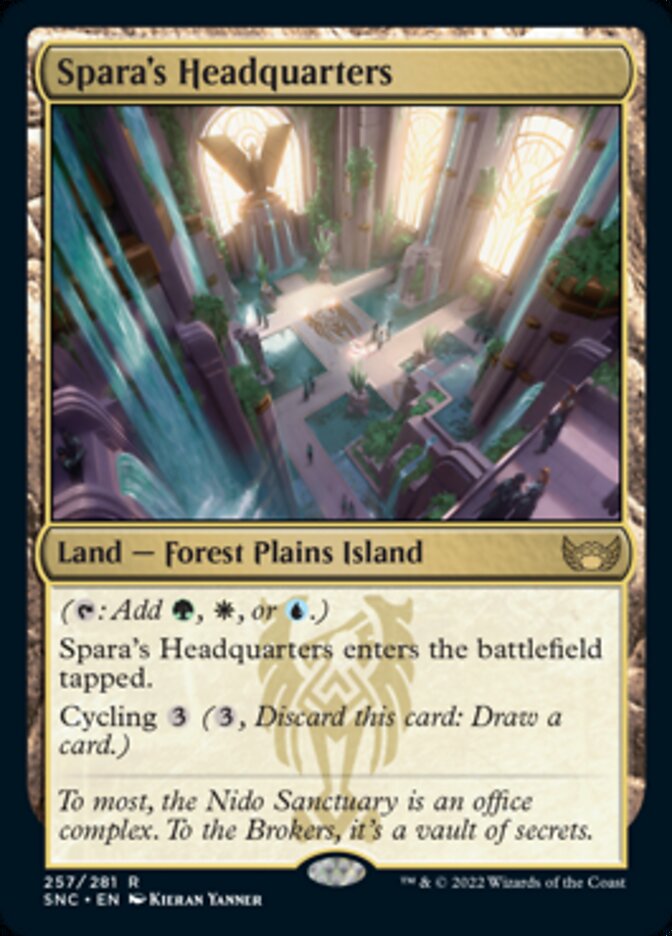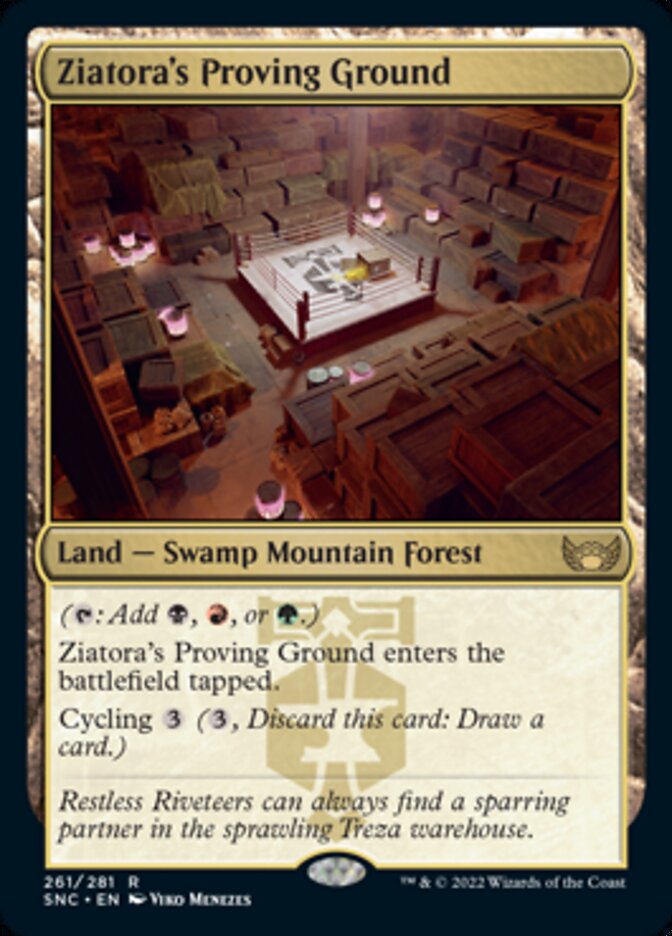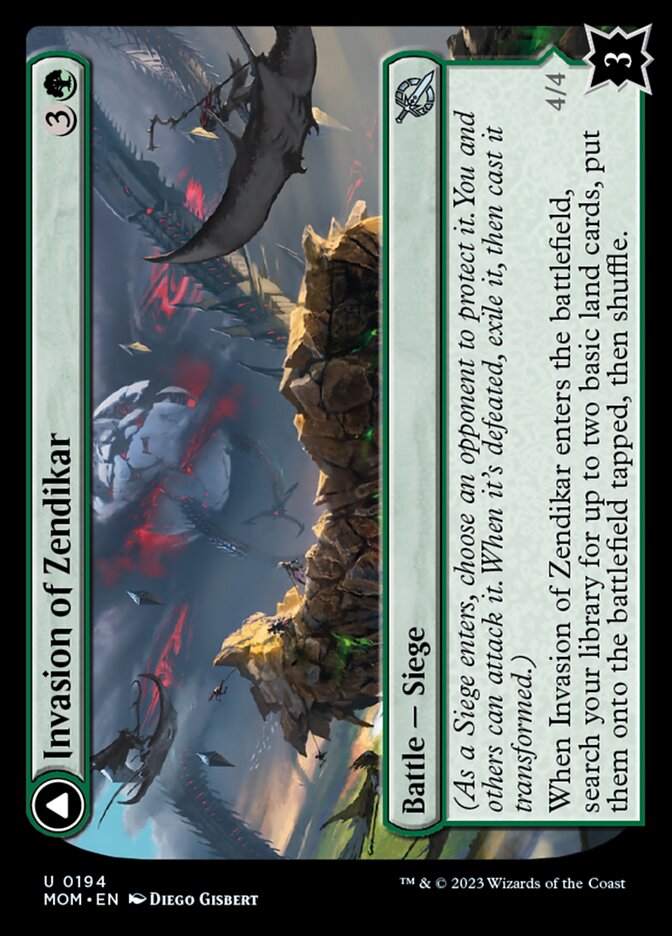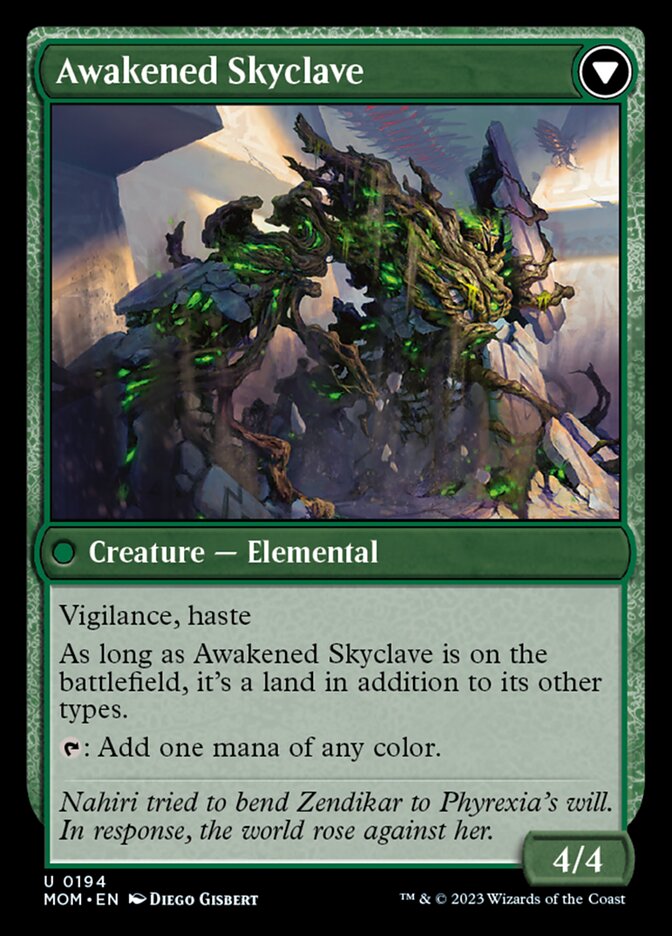Standard Domain Ramp - Deck & Side Guide
Quick intro
Domain Ramp is definitely among the top-tier decks in the format, but with the release of Ixalan, it's received some serious upgrades in the form of key cards that have enhanced its resilience against specific forms of hate, making it an even more formidable contender. Unlike the Domain Cascade Combo deck I discussed before , today I'm going to dive into this updated list, talk about some strategic card choices, mulligan decisions, and provide a sideboarding guide to give you an edge against the major players in the current meta.
My current version of the deck
The deck has really been catching on with the Magic Online grinders and it's even become one of the top picks for the Last Chance events that offered a slot in the Showcase Qualifier. Sadly, I wasn't one of the lucky ones who snagged a spot, but I've got to say, I'm pretty pleased with the overall list. I clocked a solid 4-2 with it in the latest Standard Challenge, and I was just a hair's breadth away from cracking into the top 8.

| Creature [11] | ||
|---|---|---|
| 4 Topiary Stomper | $2.79 | |
| 4 Archangel of Wrath | $0.49 | |
| 3 Atraxa, Grand Unifier | $32.99 | |
| Sorcery [10] | ||
|---|---|---|
| 2 Depopulate | $0.69 | |
| 4 Herd Migration | $0.49 | |
| 4 Sunfall | $6.99 | |
| Enchantment [8] | ||
|---|---|---|
| 4 Leyline Binding | $6.49 | |
| 4 Up the Beanstalk | $1.99 | |
| Battle [4] | ||
|---|---|---|
| 4 Invasion of Zendikar | $0.59 | |
| Planeswalker [1] | ||
|---|---|---|
| 1 Nissa, Ascended Animist | $4.49 | |
| Land [26] | ||
|---|---|---|
| 4 Cavern of Souls | $42.99 | |
| 3 Plains | $0.01 | |
| 1 Island | $0.01 | |
| 1 Swamp | $0.01 | |
| 1 Mountain | $0.01 | |
| 3 Forest | $0.01 | |
| 1 Boseiju, Who Endures | $49.99 | |
| 4 Jetmir's Garden | $21.99 | |
| 4 Spara's Headquarters | $16.99 | |
| 4 Ziatora's Proving Ground | $11.99 | |
| Sideboard [15] | ||
|---|---|---|
| 1 Depopulate | $0.69 | |
| 4 Knockout Blow | $0.35 | |
| 2 Temporary Lockdown | $7.49 | |
| 2 Obstinate Baloth | $0.35 | |
| 2 Jace, the Perfected Mind | $10.99 | |
| 2 Chrome Host Seedshark | $4.49 | |
| 2 Negate | $0.35 | |
 $133.60 Tix @cardhoarder
$133.60 Tix @cardhoarder
 $3.34 / Week @cardhoarder
$3.34 / Week @cardhoarder
 $514.46 @tcgplayer
$514.46 @tcgplayer
 $659.51 @cardkingdom
$659.51 @cardkingdom
Card choices
Cavern of Souls
When the spoiler dropped, a lot of us in the MTG community were hyped about the prospect of a better mana base for our tribal decks, like Dinos and Soldiers. The idea was to sidestep the prevalent counters in the format, especially Make Disappear. And sure enough, it played out just like we thought, and it even spawned some fresh archetypes, like Boros Humans, which really thrived with the inclusion of that land . But, to everyone's surprise, it was the Domain Ramp deck that gained the most. This deck had a tough time post-sideboard with counters – trying to stick an Atraxa and getting hit with a Disdainful Stroke or Make Disappear was just brutal.
Now that we've got Cavern of Souls in the mix, the deck can comfortably play out its seven-drop and secure a monstrous card advantage, even if our opponent manages to deal with Atraxa in some way. Plus, our mana base isn't hurting too much—by naming Angel, we can effortlessly cast Archangel of Wrath. Of course, some tweaks were necessary; the deck essentially morphed into a GW Ramp with a splash for select spells, meaning we had to cut back or run fewer copies of off-color cards like Virtue of Persistence. We've also had to let go of Mirrex because hands that include both Cavern of Souls and Mirrex can be a gamble.
Up the Beanstalk
This card has proven to be an incredible source of card advantage in eternal formats, and in Standard, it's definitely found its permanent slot. Some decklists initially ran with 2 copies in the main deck and 1 to 2 in the sideboard, but as the metagame evolved, incorporating a full playset of 4 in the main became the smart play. In Modern, we've seen its synergy with Leyline Binding create a formidable card advantage engine, and it's equally effective in this deck configuration. The deck also maintains a solid number of 5+ drops, ensuring that you rarely run out of steam during a match. Domain Ramp digs deep into the deck, whether it's with Up the Beanstalk or the various Triomes that can be fetched in the late game, and I believe that's one of the deck's key strengths. The Beanstalk strategy has been enhanced even further as lists have moved away from, or completely cut, cards that heavily penalize this approach, such as Faerie Mastermind and Sheoldred, the Apocalypse.
Nissa, Ascended Animist
Nissa has been a staple in various classic builds, including the deck piloted by Brazil's own Willy Edel to secure a top 8 finish at this year's Magic Championship. She's a key player in the mirror match, just like Jace from the sideboard. Typically, it's these two who turn the tide in games that are heavy on resource exchange. Nissa can single-handedly clinch games with her ultimate, churn out increasingly larger tokens, and take out pivotal cards like Up the Beanstalk and Leyline Binding. Successfully resolving her after casting a Herd Migration can often mean an immediate win.
Playing the deck
The deck requires a solid base of lands and some early interaction to be playable, but overall, it boasts a high number of keepable opening hands due to its late game strength. The optimal curve kicks off with Topiary Stomper, followed by an Invasion of Zendikar play, which sets up the dinosaur to enter the fray and beefs it up to a formidable 4/4 creature. From that point on, the deck is stacked with powerful bombs, removals, and additional ramp options, allowing you to smoothly advance your strategy with confidence.
Example Hand #1

A bit on the slower side, but definitely packs a punch. Up the Beanstalk provides card draw that can lead to additional draws in the late game. Standard has been trending towards a more grindy and slow-paced meta, so for that reason, I'd be inclined to keep it in my opening hand. However, if I knew I was up against a more aggressive deck, I think I'd mulligan if I was on the draw.
Example Hand #2

We're looking at a hand here that's missing white mana sources, but we've got the Dinosaur to help us ramp into that, and we can still interact early on thanks to Leyline Binding. As previously mentioned, Standard's pace is on the slower side, so it makes sense to keep this hand, whether we're on the play or the draw. It's clearly more advantageous on the play since we can get that white mana online a turn sooner, but overall, I don't think the hand is weak enough to justify a mulligan.
Example Hand #3

This hand is a bit on the risky side, even though we're packing a couple of Leyline Bindings, they're priced at 3 mana a pop. Our hand's loaded with some heavy hitters, but if we luck into a Jund Triome off the top in our next few draws, we've got a hand that can really throw down early and is likely to curve out nicely into an Atraxa showdown. I'm leaning towards keeping it on the draw since we've got an extra turn to snag that third land drop, but I'd probably mulligan if we're on the play.
Tips & Tricks
#1. Triomes & Timing
If you're holding a pair of Triomes, with Spara Headquarters and Ziatora's Proving Ground in the mix, you definitely want to lead with Spara. This play sets you up for a potential turn 2 Leyline Binding. Other deck builds might tempt you to drop Ziatora first, giving you that early access to Virtue of Persistence on turn 2. But for this particular list, your go-to opener should always be the Bant Triome. This strategy is also crucial when you're looking to cast Negate post-sideboard.
#2. Naming & Cavern of Souls
In game one, you're likely going to name Angel on Cavern of Souls to smoothly cast both Atraxa and Archangel of Wrath. But post-sideboard, when you bring in Chrome Host Seedshark, you might want to switch up your naming game to Phyrexian, ensuring you can deploy both that and Atraxa without a hitch.
#3. Lands Are Critical
If you're holding Herd Migration but find yourself without any lands in hand, don't hesitate to play it to fetch a land. In this deck, it's absolutely critical to hit all your early land drops to set up your game plan.
#4. Invasion of Zendikar
When you're playing Invasion of Zendikar, it's crucial to strategize about which land to fetch. You're running a primarily Green-White (GW) deck with just a splash of the other colors, so keep that in mind. Typically, grabbing a Mountain isn't the best move since it doesn't help you cast Atraxa. However, if you're in a situation where you need both kickers for Archangel of Wrath, then you might consider fetching a Mountain early on to set that up.
You can cover the kicker cost for Archangel of Wrath using the colored mana produced by Cavern of Souls.
Matchups & Sideboard guide
Esper Midrange
The matchup was well-balanced. Including Cavern of Souls in the deck really made a significant difference, especially since previously, our deck struggled a lot when facing Make Disappear on any of our key spells. Sure, countermagic can still mess with our sweeper plays, but getting an Atraxa or an Archangel of Wrath to stick and wipe out creatures can be game-changing. Additionally, the inclusion of Deep-Cavern Bat has been advantageous for the Esper strategy, as it can snipe a targeted removal or disrupt one of our high-impact plays.
Post-sideboard, some lists might bring in Lithomantic Barrage, but for this particular build, we just need to up our sweeper count. Chrome Host Seedshark has been incredibly potent as well, often acting like a lightning rod for removal spells, which in turn allows our angels to really shine on the battlefield.
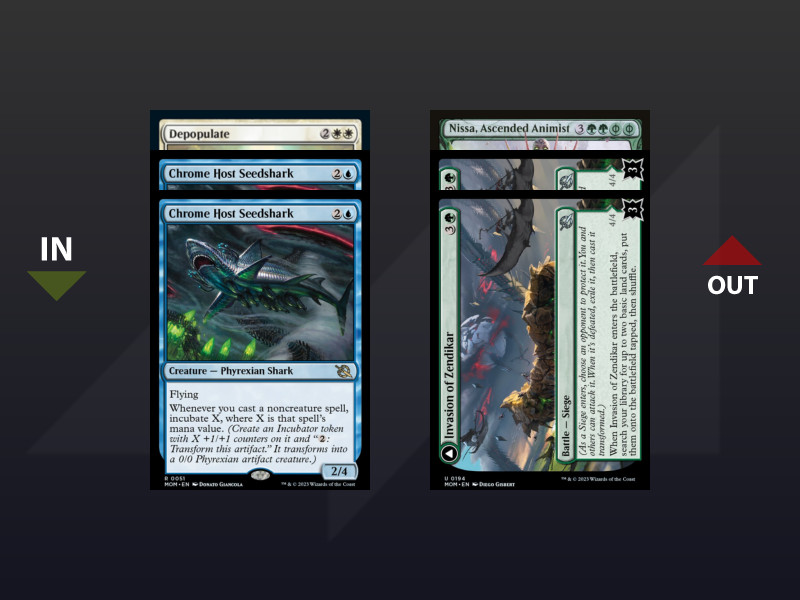
Golgari Midrange
That was a solid match. Not having to face counters in midrange matchups is always a plus for this deck. However, we've got to stay sharp because they pack serious heat with planeswalkers and man-lands. As long as we don't miss our land drops and can weather the early onslaught, we should be in for a smooth ride. Dropping a Herd Migration can be a game-ender on its own. Post-sideboard, one of the BG deck's slickest moves is to stick a Liliana of the Veil and start stripping away our resources—that's where Obstinate Baloth really shines.
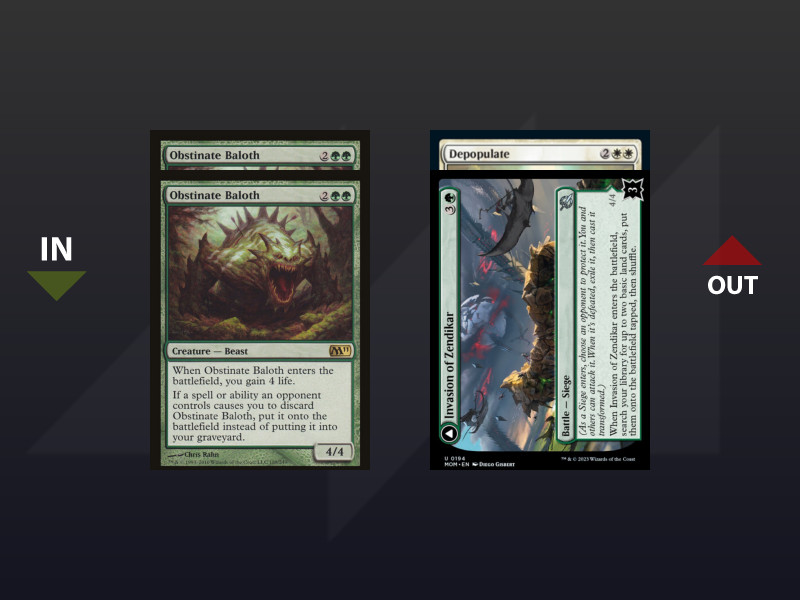
UW Soldiers
The matchup is somewhat challenging, but it has improved with the inclusion of Cavern of Souls. Much like when facing Esper Midrange, one of our top strategies is to counteract their Make Disappear plays that aim to neutralize our heavy hitters. Early in the match, we might struggle a bit since the deck's pace can be intense, especially if they combo Resolute Reinforcements with Zephyr Sentinel. We've got to be vigilant and prevent falling too far behind.
Typically, they don't pack a lot of removal in their main deck, so dropping an Archangel of Wrath to take out a couple of creatures can gain us a significant life buffer and it's tough for them to get rid of. After sideboarding, Temporary Lockdown emerges as one of our best cards. However, Get Lost poses a serious threat since it can essentially handle all our threats and enchantments. As a pro player, it's crucial to navigate these dynamics carefully to maintain a competitive edge.
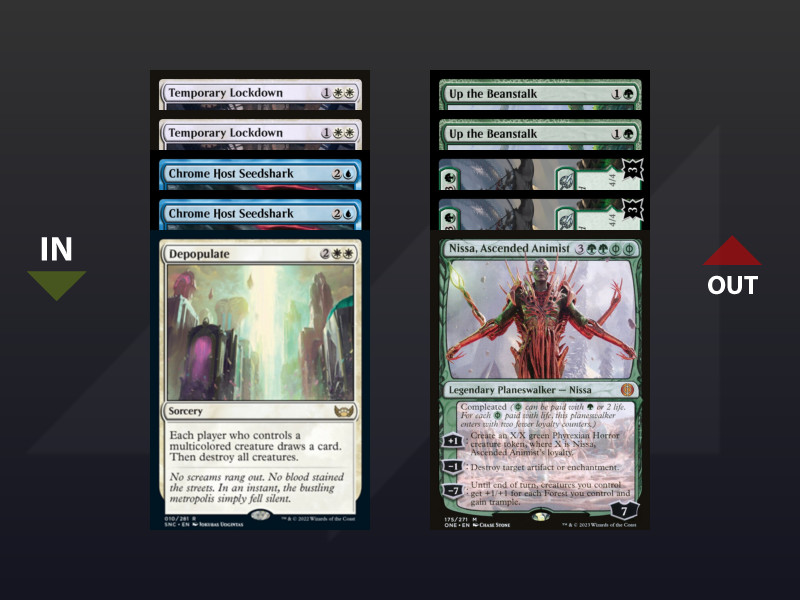
Monored Aggro
While Monored can certainly be a blazingly fast and explosive deck, I'm confident we've got a solid matchup. However, our list takes a slight hit in the main deck due to the absence of Virtue of Persistence. Don't hesitate to take something off the board early with Leyline Binding—every point of life is pivotal for clinching the win. Dropping an Archangel of Wrath without its kicker can still put a ton of pressure on your opponent, so definitely consider casting it on turn 4 if you can. Post-sideboard, our situation improves dramatically with 4 Knockout Blows at our disposal; it's tough for any deck to play around a one-mana removal spell that also nets you some valuable life points. Baloth and Chrome Host Seedshark are key to our strategy for lowering the curve and maintaining control of the game.

Boros Aggro
A similar match to Mono-Red, even though it packs more threatening cards such as Thalia and Adeline, which together can tax our spells and impose a legitimate clock on the game. Also, keep an eye out for Imodane's Recruiter, which can be a sneaky play post-sweeper. After sideboarding, more targeted removal makes the matchup more manageable, but we've also got to be wary of Get Lost.
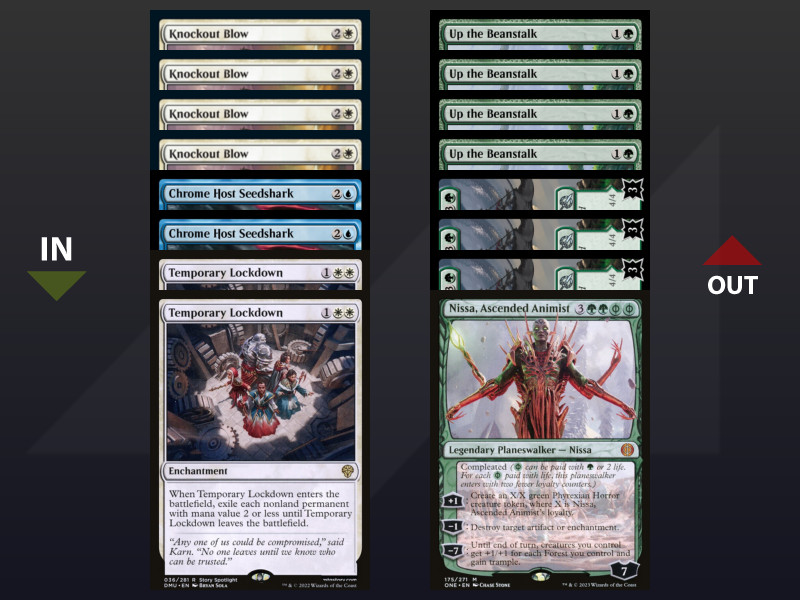
Rakdos Breach
We're looking at a midrange deck here that doesn't pack any counterspells, but it compensates with some seriously heavy and brutal plays, especially when it comes to dropping bombs like Etali and ripping through with Breach the Multiverse. The matchup tends to be a real slog, although they've got a bunch of dead cards against us in game one. Overall, they've got answers to pretty much everything we throw down, so it's not exactly a favorable matchup. Their best win condition is decking us out, since we draw a ton with Up the Beanstalk and a well-timed Breach milling 10 cards can hit us hard.
After sideboarding, we mix up our threats and bring in Negate, which is clutch for shutting down some of their key plays. We also have the option to flip the script with Jace and mill out our opponent before they can do the same to us. Keep it tight, play smart, and we can navigate through their tricks.

Domain Ramp
The mirror match is one of the most intense grinds you're going to encounter in this format. It's all about the resource exchange, with card advantage being churned out by cards like Up the Beanstalk and Atraxa. The MVPs here are definitely Atraxa herself and Nissa, who can break open a stalled board and provide a massive edge with her ultimate. Be wary of milling yourself out—sometimes it's smarter not to grab every possible card type off of Atraxa's trigger to avoid depleting your library too much. Post-sideboard, we've got a killer tech for the mirror: Jace, the Perfected Mind. The optimal play is usually to hold onto Jace, waiting for the prime moment to mill 15 cards from your opponent's deck, which can often secure you the win.
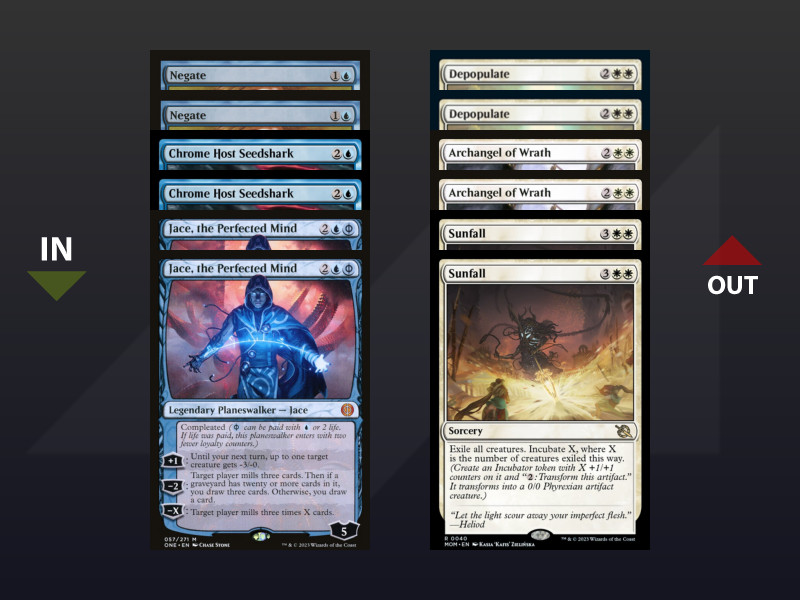
Final words
With the arrival of Cavern of Souls, Domain Ramp has truly cemented its place among the top tiers of the format. The blend of ramping strategies, card advantage, and massive threats keeps this deck as one of the premier choices for competitive play.
Catch you at the next tournament!


